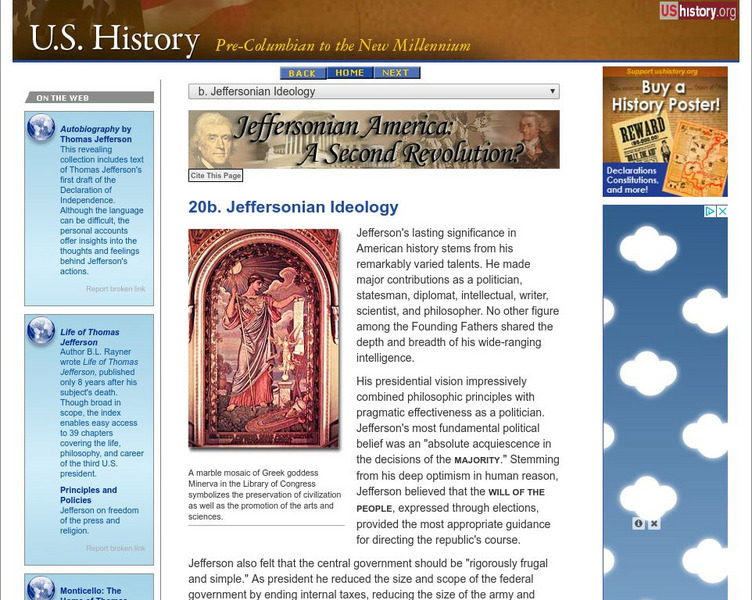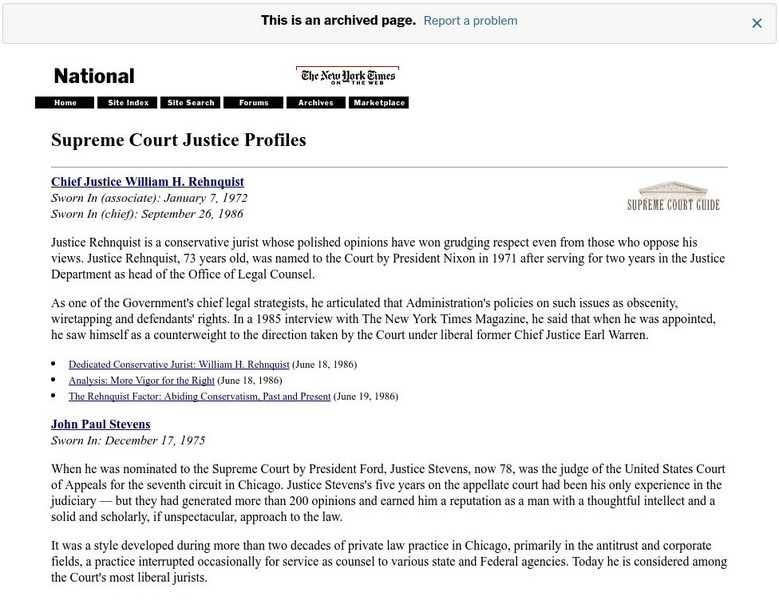Hi, what do you want to do?
Curated OER
Nationalism
Tenth graders examine the causes and course of World War I. They read and discuss a handout, simulate the formation of a country, design a flag, develop a national slogan, and present their country's information to the class.
Curated OER
The Causes and Course of the First World War
Use this twelve-day lesson plan to teach about the causes and courses of WWI. Each day scholars attend lectures, complete creative activities, and hold round table discussions on what they've learned. Web links and resources are...
Humanities Texas
Primary Source Worksheet: “Report on Manufacturers,” Annals of Congress
Invite your learners to take a look at life during the term of United States president George Washington through analysis of an interesting primary source. The document summarizes American manufacturing capacities, as detailed...
Prestwick House
Reading Nonfiction: Analyzing Joseph McCarthy's "Enemies from Within" Speech
Looking for a lesson that teaches class members how to analyze nonfiction? Use Joseph McCarthy's famous "Enemies from Within" speech as a instructional text. Worksheet questions direct readers' attention to the many historical...
Curated OER
His Story/Her Story/Your Story
Students read a variety of biographies to gain insight on the experiences of an African-American's life. Individually, they try to determine the time period it was written and compare the event with ones that occured in their own lives....
Curated OER
Get to Know Your Bill of Rights
Sixth graders research and examine the first ten amendments to the Constitution of the United States of America. They sequence events significant to this time period, read and discuss text, and in small groups prepare and present the...
Curated OER
How Do Conflicts Escalate?
Young scholars examine, evaluate and understand the concept of conflict, conflict escalation and colflict resolution through a variety of creative interactions.
Curated OER
Lesson Plan on World War II: Illinois Role-The 33rd Infantry Division
Young scholars complete several creative writing assignments regarding the 33rd Infantry Division of Illinois, which was active during World War II. They discuss how this war brought about changes in the state of Illinois and...
Curated OER
Separating Fact from Fiction
In this English grammar activity, students study a chart of definitions and pointers. Students then read 5 explanations as to how to separate fact from fiction.
Curated OER
Locke's Second Treatise on Civil Government
In this online interactive history worksheet, students respond to 10 short answer and essay questions about Locke's Second Treatise on Civil Government.
Curated OER
Exploring Folk Traditions and Folk Beliefs
Ninth graders work together to brainstorm an idea to focus on the similiarties and differences between various cultures. Individually, they interview family members using questions they created based on their topic. They use their...
University of Groningen
American History: Essays: What Do the Netherlands and the Us Have in Common?
Essay on the commonalities between the Dutch and U.S. The author points to political ideology and humanistic beliefs that unite the two countries.
San Diego State University
World History for Us All: Two Big Powers and Their Cold War 1945 1990 [Pdf]
After completing this unit, students will be able to describe major differences in the political ideologies of the United States and the Soviet Union, explain the causes of the Korean War and the Cuban Missile Crisis, and explain how...
Khan Academy
Khan Academy: Us Government and Civics
An entire course on US government and civics - we don't seem to have any of it; many individual lessons to harvest. Should be cross-checked against embedded videos.
Independence Hall Association
U.s. History: Jeffersonian Ideology
An easy to understand overview of the thinking of Thomas Jefferson in terms of politics and the role of the people in political action. See what he feared as the nation was becoming industrialized, and read about the contradictions in...
New York Times
New York Times: Supreme Court Justice Profiles
This New York Times site contains biographies of every US Supreme Court Chief Justice including early life, famous decisions, and opinions.
PBS
Pbs Learning Media: Huac and Hollywood
This video and support materials detail the Hollywood blacklist and House Un-American Activities Committee, chronicling the fear of Communism and resulting blacklist based on political ideology. The video is from the American Masters...
Other
The Hill
The Hill is a non-partisan, non-ideological weekly newspaper that describes the inner workings of Congress, the pressures confronting policy makers and the many ways in which decisions are made.

















![World History for Us All: Two Big Powers and Their Cold War 1945 1990 [Pdf] Lesson Plan World History for Us All: Two Big Powers and Their Cold War 1945 1990 [Pdf] Lesson Plan](https://static.lp.lexp.cloud/images/attachment_defaults/resource/large/FPO-knovation.png)


